Ryan Grammenos
A Smart Recycling Bin Using Waste Image Classification At The Edge
Oct 02, 2022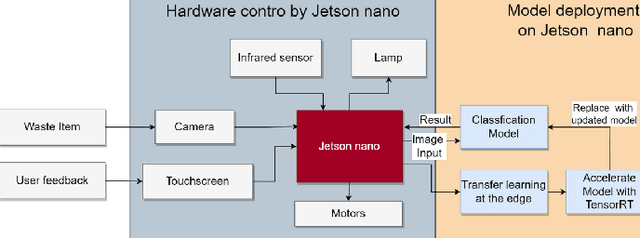
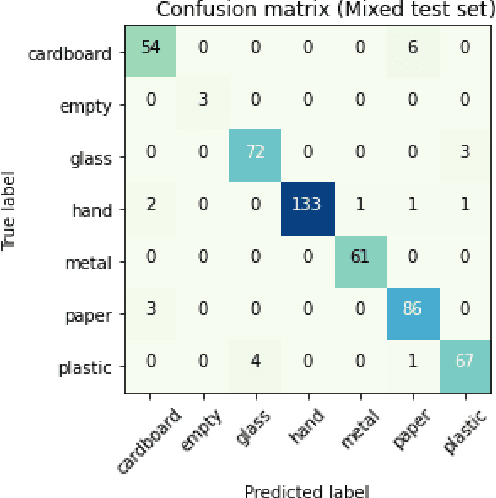
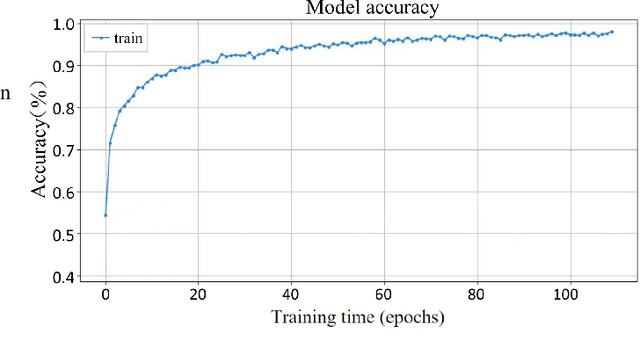
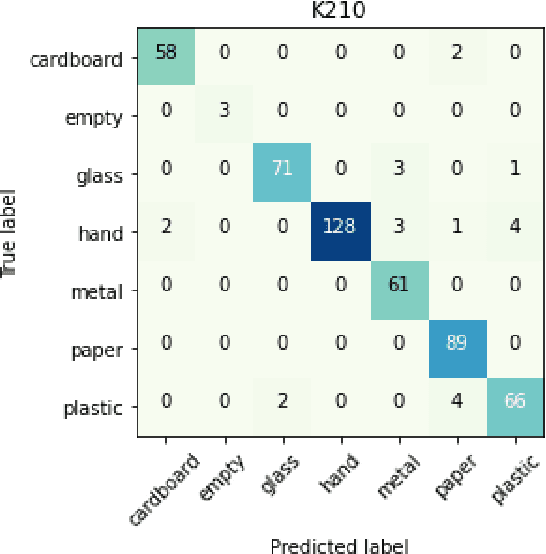
Abstract:Rapid economic growth gives rise to the urgent demand for a more efficient waste recycling system. This work thereby developed an innovative recycling bin that automatically separates urban waste to increase the recycling rate. We collected 1800 recycling waste images and combined them with an existing public dataset to train classification models for two embedded systems, Jetson Nano and K210, targeting different markets. The model reached an accuracy of 95.98% on Jetson Nano and 96.64% on K210. A bin program was designed to collect feedback from users. On Jetson Nano, the overall power consumption of the application was reduced by 30% from the previous work to 4.7 W, while the second system, K210, only needed 0.89 W of power to operate. In summary, our work demonstrated a fully functional prototype of an energy-saving, high-accuracy smart recycling bin, which can be commercialized in the future to improve urban waste recycling.
Improving the Deployment of Recycling Classification through Efficient Hyper-Parameter Analysis
Oct 22, 2021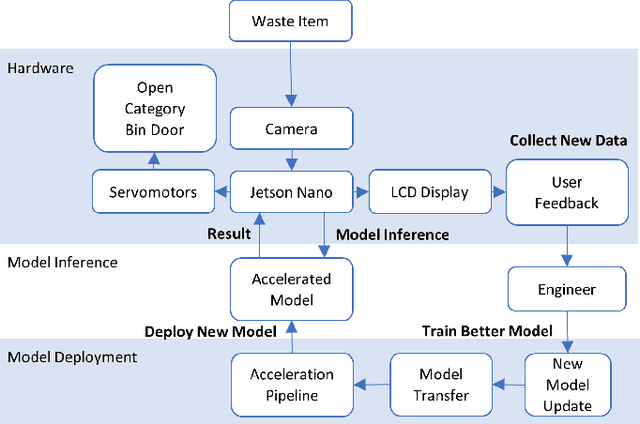
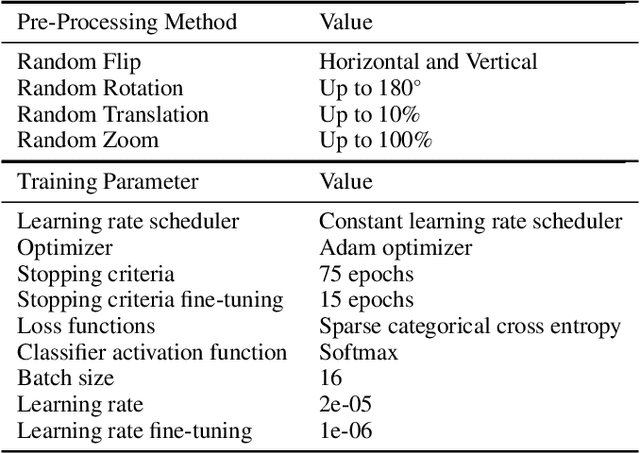

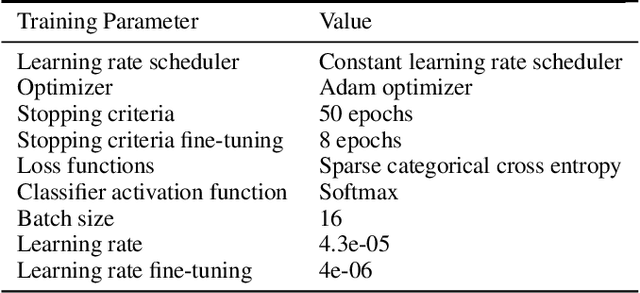
Abstract:The paradigm of automated waste classification has recently seen a shift in the domain of interest from conventional image processing techniques to powerful computer vision algorithms known as convolutional neural networks (CNN). Historically, CNNs have demonstrated a strong dependency on powerful hardware for real-time classification, yet the need for deployment on weaker embedded devices is greater than ever. The work in this paper proposes a methodology for reconstructing and tuning conventional image classification models, using EfficientNets, to decrease their parameterisation with no trade-off in model accuracy and develops a pipeline through TensorRT for accelerating such models to run at real-time on an NVIDIA Jetson Nano embedded device. The train-deployment discrepancy, relating how poor data augmentation leads to a discrepancy in model accuracy between training and deployment, is often neglected in many papers and thus the work is extended by analysing and evaluating the impact real world perturbations had on model accuracy once deployed. The scope of the work concerns developing a more efficient variant of WasteNet, a collaborative recycling classification model. The newly developed model scores a test-set accuracy of 95.8% with a real world accuracy of 95%, a 14% increase over the original. Our acceleration pipeline boosted model throughput by 750% to 24 inferences per second on the Jetson Nano and real-time latency of the system was verified through servomotor latency analysis.
Towards artificially intelligent recycling Improving image processing for waste classification
Aug 09, 2021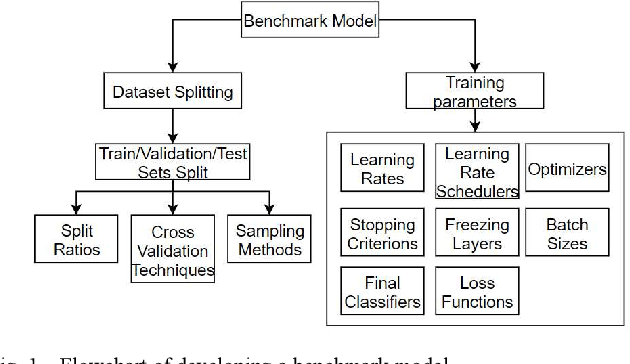
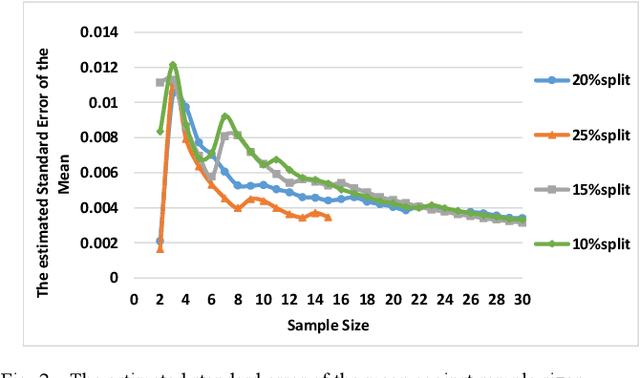
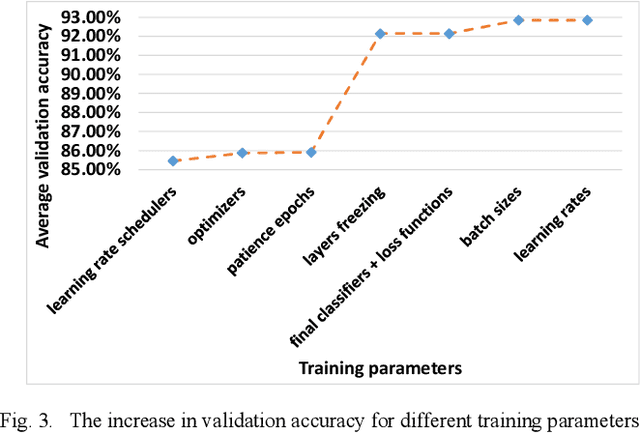
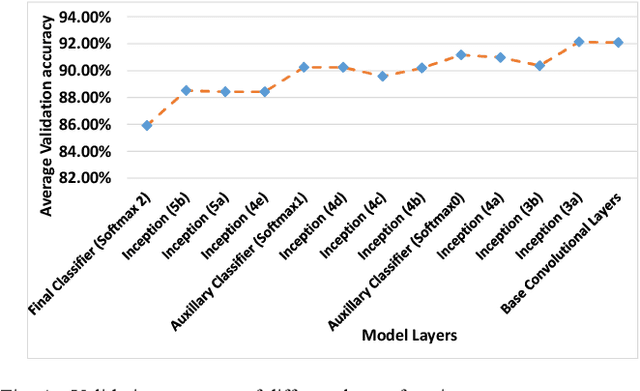
Abstract:The ever-increasing amount of global refuse is overwhelming the waste and recycling management industries. The need for smart systems for environmental monitoring and the enhancement of recycling processes is thus greater than ever. Amongst these efforts lies IBM's Wastenet project which aims to improve recycling by using artificial intelligence for waste classification. The work reported in this paper builds on this project through the use of transfer learning and data augmentation techniques to ameliorate classification accuracy. Starting with a convolutional neural network (CNN), a systematic approach is followed for selecting appropriate splitting ratios and for tuning multiple training parameters including learning rate schedulers, layers freezing, batch sizes and loss functions, in the context of the given scenario which requires classification of waste into different recycling types. Results are compared and contrasted using 10-fold cross validation and demonstrate that the model developed achieves a 91.21% test accuracy. Subsequently, a range of data augmentation techniques are then incorporated into this work including flipping, rotation, shearing, zooming, and brightness control. Results show that these augmentation techniques further improve the test accuracy of the final model to 95.40%. Unlike other work reported in the field, this paper provides full details regarding the training of the model. Furthermore, the code for this work has been made open-source and we have demonstrated that the model can perform successful real-time classification of recycling waste items using a standard computer webcam.
 Add to Chrome
Add to Chrome Add to Firefox
Add to Firefox Add to Edge
Add to Edge